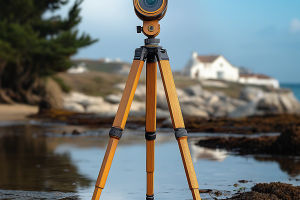Natural light is a photographer's best friend—it's free, ever-changing, and beautifully unpredictable.
Whether you're capturing vibrant street life, peaceful landscapes, or cultural details while traveling, learning to use natural light effectively will instantly elevate your shots.
This guide will help you understand how to work with the natural light available to you. No need for complicated equipment or editing tricks—just your eyes, your timing, and a little know-how. With these practical tips, you'll see how light can turn an ordinary photo into something unforgettable.
Understanding Light's Personality
Natural light changes throughout the day—and each type of light has a mood of its own. When you start to notice these shifts, you'll know how to use them to your creative advantage. Let's explore how different light settings affect your photos and how to work with them instead of against them.
Golden Hour: The Magic Window
That warm, dreamy glow just after sunrise and before sunset? That's golden hour. It softens shadows, adds depth, and brings out warm tones in a way no filter can. Try scheduling your shoots around this time—whether you're snapping portraits, buildings, or natural scenes, everything just looks better bathed in gold.
If you're traveling or capturing landmarks, golden hour adds a sense of warmth and wonder. Just be quick—it doesn't last long!
Midday Sun: Handle With Care
Shooting under a blazing noon sun can be tricky. It creates harsh shadows and can wash out colors. But don't worry—it's still usable. Try moving your subject into partial shade, or use surfaces like white walls or light-colored ground to bounce light more gently.
Another trick? Turn your subject slightly so that the light hits at an angle, not straight on. This helps soften features and add dimension.
Cloudy Days: Nature's Softbox
Overcast skies are perfect for even, shadow-free lighting. Don't skip your camera just because the sun's hiding—clouds act like a giant soft filter, ideal for portraits and moody shots. The colors might be more muted, but that can work to your benefit when you want a softer, more emotional feel.
Position, Angles, and Creative Tricks
Once you understand what the light is doing, it's time to play with how you use it. Your position, your subject's angle, and your creativity all come into play here. Let's look at some easy but powerful ways to shape light into the photo you want.
Use Side Lighting for Drama
When light hits your subject from the side, it brings out texture and contrast—great for portraits, architecture, or capturing cultural details like crafts or textiles. Side lighting adds depth, giving your photos that extra "pop" without any editing.
Try moving around your subject to find the angle where shadows and highlights feel balanced. You'll be surprised how one step can change the entire mood of your shot.
Backlight for Glow and Silhouettes
Shooting with the light behind your subject can create stunning effects. If you expose for the subject, you get that soft, glowing halo—great for capturing movement or romantic scenes. If you expose for the background, your subject becomes a silhouette—bold, graphic, and full of emotion.
Experiment with both and see what feels right. This works beautifully during sunset, in forests, or near windows with bright light.
Look for Natural Reflectors
You don't need a reflector in your bag—look around you! Pale walls, sandy ground, water, or even a light-colored shirt can bounce light back onto your subject. This softens shadows and adds light to faces, especially useful when shooting outdoors.
Just position your subject near one of these surfaces, and notice how the lighting feels smoother and more balanced. It's a subtle shift that makes a big difference.
Great photos aren't about expensive equipment—they're about understanding and using light effectively. Natural light is constantly changing, and that's what makes it magical. When you start to understand its moods and use it with purpose, your photography becomes more expressive and alive.
So next time you're out exploring with your camera, slow down and watch the light. Let it guide you. Whether you're shooting city streets, quiet countryside, or lively events, working with natural light will help your photos tell a more vivid, heartfelt story.


